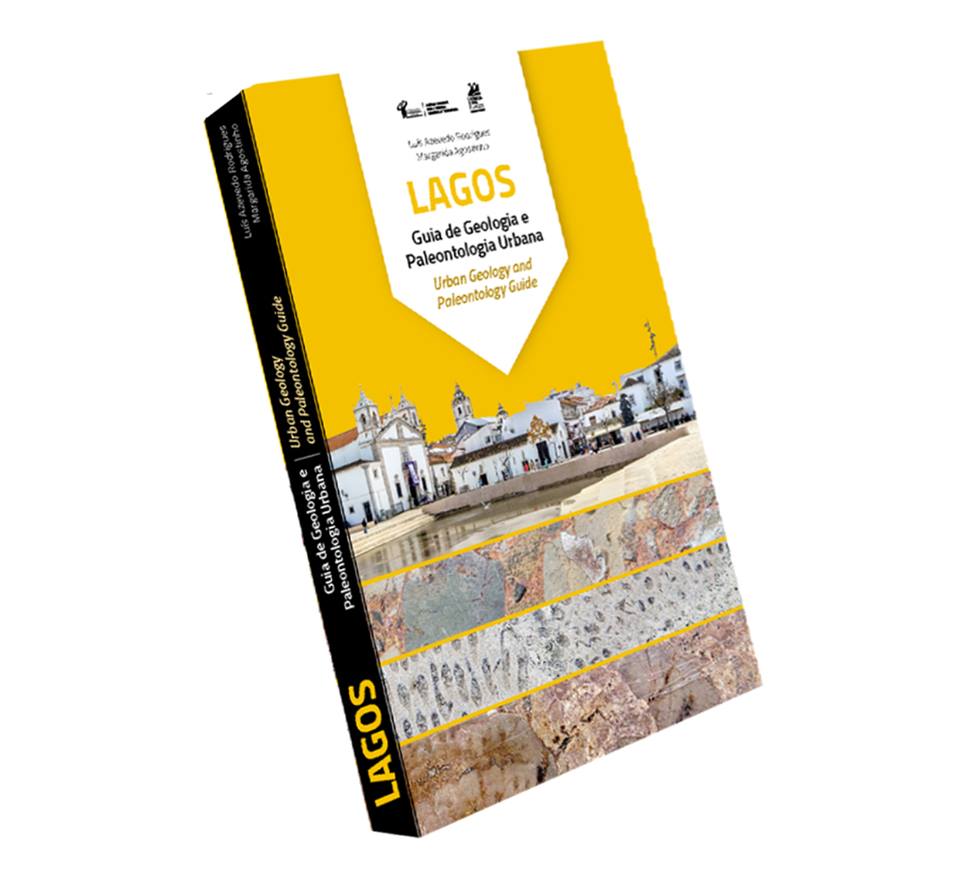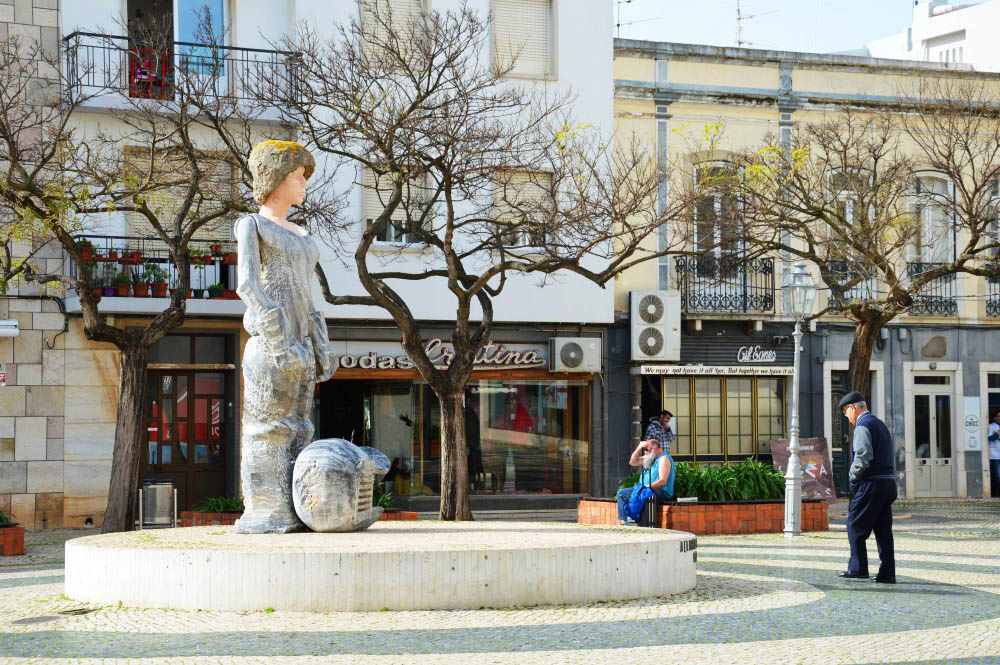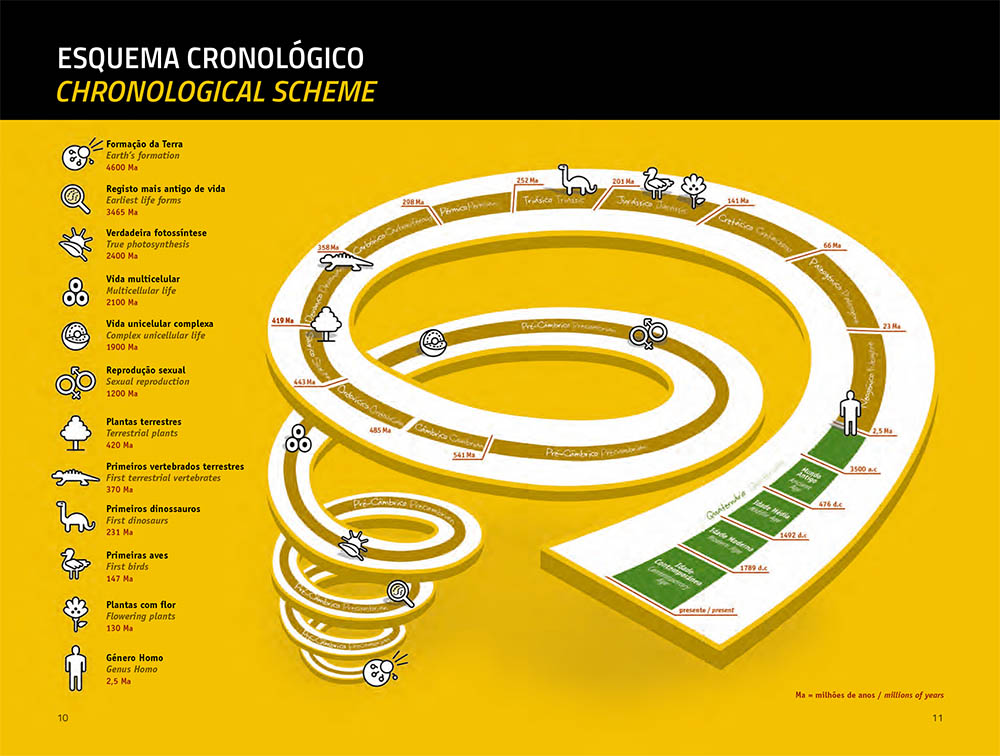 Those who enter a church to visit, look at the stones in the arches, porticoes and columns, but only to appreciate the style and skill of those who carved them. But now there is a guide who wants to make visitors look at the stones in a different way, which even tell stories much older than the monument itself.
Those who enter a church to visit, look at the stones in the arches, porticoes and columns, but only to appreciate the style and skill of those who carved them. But now there is a guide who wants to make visitors look at the stones in a different way, which even tell stories much older than the monument itself.
If you've ever been lucky enough to catch it open and visit the Church of São Sebastião, in Lagos, you've certainly never noticed the 150-million-year-old fossils that exist in the rock on which the baptismal font is made. And whoever photographs D. Sebastião, downtown, may have never taken a good look at the four different rocks that were used by the sculptor João Cutileiro to make the statue of the boy king.
Tomorrow, as part of the celebrations for the municipal holiday of Lagos and the seventh anniversary of the city's Ciência Viva Centre, this CCV will launch the «Guide to Urban Geology and Paleontology of Lagos», written by Luís Azevedo Rodrigues and Margarida Agostinho, who intends to , precisely, to make known the rocks and fossils that are part of churches, monuments and other buildings and urban equipment.
Luís Azevedo Rodrigues: «what we wanted is for people to visit a church or the walls and also look at the geological materials that build these monuments»
This is the first in a series of three guides to be edited in 2016, about the three Algarve cities with Ciência Viva Centers – Faro, Lagos and Tavira. those of Faro and Tavira, as revealed by Luís Azevedo Rodrigues to Sul Informação, are expected to be released during the next month of February.
The director of the CCV in Lagos, himself a doctorate in Paleontology, says that the idea of making these guides came when he was coordinator of the three Ciência Viva Centers in the Algarve, in an «attempt to coordinate his intervention and unite them in a common project» . The idea, he explains in an interview with our newspaper, "was to create a script used by the CCV to publicize the city, but from a geological and paleontological point of view."
“What we wanted is for people to go, for example, to visit a church or the walls and also look at the geological materials that build these monuments. These rocks have a history, a chronology, sometimes they have fossils, other times they have come from far away to be used in this or that building, they have come a long way to get here».
And don't think that it's just the monuments that have millions of years of Earth's history waiting to be discovered. “In Lagos, there are rocks from Rajasthan, a state of India, in current buildings. In Tavira, I once walked into a cafe and saw the top, made of very old granite, several billion years old, and which, moreover, is a rock that comes from far away, from Finland».
In cities, stresses Luís Azevedo Rodrigues, there are «several stories and interpreters of the Earth's geological past». Therefore, he explains, «this Guide will allow visitors to Lagos, national and foreign, to make a more complete visit to the city, getting to know some of the materials that built it over the centuries until today».
But the Guide is not limited to geological aspects. «In all three Guides, we had the collaboration of art historian Rita Manteigas, responsible for the complementary notes on each suggested stop».
Luís Azevedo Rodrigues: «this Guide will allow visitors to Lagos, national and foreign, to make a more complete visit to the city»
This is because, underlines Luís Azevedo Rodrigues, “there are two very different chronologies here that must be put together: geoscience, rocks and fossils and the chronology of urban equipment. In other words, the chronology of Earth History and Human History». In other words, "a church may be very old, for example from the XNUMXth century, but that does not mean that it was built with the oldest rocks, while a modern cafe may have rocks that are many millions of years old".
The suggested stops are nine and the Sul Informação here it raises yet another edge of the veil: even the building of the Centro Ciência Viva de Lagos is part of the geological route of the city.
Very important detail: these booklets are effectively guides, very visual, with simple language, very attractive graphics, full of images, explaining everything with rigorous simplicity. "They are guides for a normal, non-specialized audience, for a person who wants to take a different tour of the city and look at things in a way he's never seen before."
Furthermore, guarantees the director of CCV Lagos, these guides “are for use when visiting the monuments, but people can also be at home, reading them”. And who knows how to prepare a visit field (in town), carrying the booklet in hand.
The production of these guides involved “a very large and very committed team”. From the outset, the two authors and the art historian. But also the photographer, the designers, the translators».
The «Guide to Geology and Urban Paleontology of Lagos», as well as those of Tavira and Faro, are bilingual books, in Portuguese and English, with 124 pages, with 1000 copies of each being published.
They should cost between 10 and 12 euros and will be on sale at the Ciência Viva Centers, as well as, eventually, at some tourist offices and other structures.
Luís Azevedo Rodrigues reveals that copies will also be given to schools. Meanwhile, the teams of the Algarve CCVs have already received training to be able to guide educational visits for the geological and paleontological heritage.
Luís Azevedo Rodrigues : «It is not easy for teachers to take students to the field. But now they can just walk around town and have them look at the rocks»
But the director of the CCV points out that «teachers will also be able to make these visits through their cities, using the Guide. Sometimes it's not easy to take students into the field. But now they can also simply walk around the city and have them look at the rocks».
Because, he adds, "these books also allow for different levels of exploration in formal education: from the 1st Cycle class that, for example, in the Study of the Environment unites knowledge - scientific, technological and social - contributing to the development of some skills for the understanding of the world, to Secondary Education, where in addition to Geology, other areas of knowledge can be united in these journeys».
But the primary audience of the Geology and Paleontology Guides is really tourists, national and foreign, who will now be able to look at the historical and architectural heritage under a completely innovative prism. «These books are also a contribution of these scientific areas to the Algarve's tourism offer, as they promote diversification and increase its added value in a region where tourism is vital», concludes the director of CCV Lagos.




















Comments